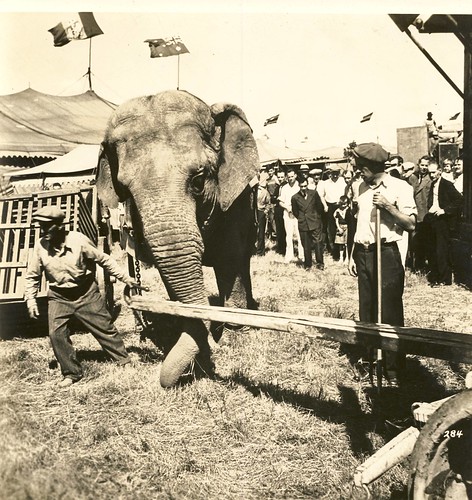 Scan10093, originally uploaded by bucklesw1. Despite living during the Great Depression, these people wandering around the lot sure look well dressed. I wonder what they would think of today's youth parading around with their asses hanging out. Of course today's kids pay a price for looking cool, this fashion has caused many a felon to be outrun after bailing out of a stolen car.
|
Saturday, July 21, 2007
From Buckles #2
Posted by
Buckles
at
7/21/2007 05:49:00 AM
![]()
Subscribe to:
Post Comments (Atom)





8 comments:
Did any vehicle other than the circus wagon ever have this type pole?
Does some reader know when this this originated?
I'm sure all you Baraboo train crew guys know what a "gooseneck" is.
Dave,
This might sound dumb on my part, but wouldn't anything that required multiple hitches such as stage coaches or heavy draft stock on farm wagons have used the same double tree, single tree, goose neck set up?
Bob
Bob:
I understand your logic but I've seen a few stage coaches and lots of farm wagons and I never saw a heavy pole like this one on anything except a circus wagon.
I wonder if maybe your heavy logging wagons of yore might have used this set-up.
Somebody out there come help me on this one.
I believe you will find the goose neck quite common on a number of horse drawn wagons, carriages, etc. The reason being that if you have to pull it with some sort of conveyance there is something to hook on to. Maybe a hook rope of some sort, a chain,etc. Certainly it would be a necessity for a multiple hitch, double trees, body poles etc. So wagon or buggy without a goose neck at the end of its tounge or pole would be like a kids play wagon without a handle on the front pole.
Another common arrangement for wagons or buggies would be a yoke that would slide on to the front of the tongue, pole, etc. about six or eight inches. This could only be used on a two horse team with the exception that a hook or goose neck would be added on either on top or underneath just behind the end of the yoke ending. Sounds too confusing so will leave it at that. A circus wagon would also have to short thains a couple feet in length fitted on both sides on the front of the pole with ring on the end of them that would hook into a huge snap directly under the hames in or der steer the wagon when hitched. Otherwise the pole would swing sideways and hit the front legs of the team. These were naturally known as pole chains.
If a wagon is unhooked and has to be pulled or spotted on the lot. The elephant or horse team would hook onto the goose neck rather than the double trees on as some would say "eveners"
I guess my comments on this subject can get too technical and boring, and in fact there are various ways that both methods could be incorporated. For example the use of "collar and hame" harness and, or "breast harness". However I believe that anything we do in the circus, especially among animal trainers, is to make every effort to try to ensure that it be; "GOOF PROOF". Good luck.
Post a Comment